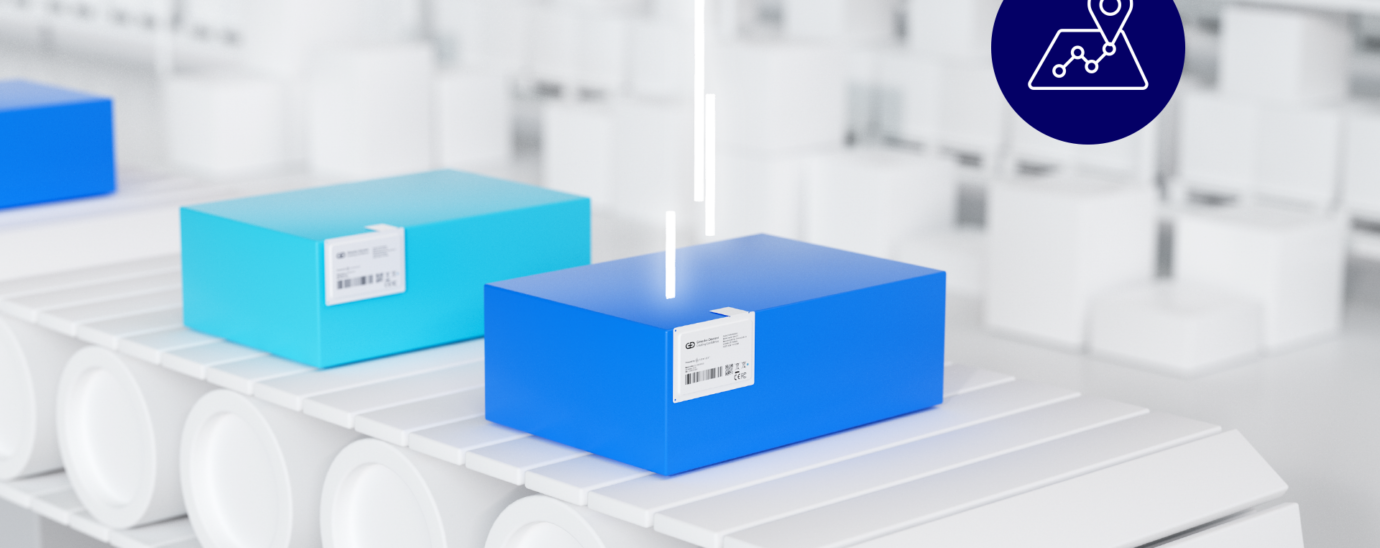How smart labels are transforming supply chains

When Giesecke+Devrient (G+D) unveiled the first smart label in 2023, it marked a pivotal moment in supply chain technology. What looked like a standard shipping label was a game-changing innovation, embedding IoT functionality into an everyday item. Smart labels have quickly become a vital tool for modern logistics and supply chain management by enabling real-time tracking, seamless data sharing, and advanced monitoring.
At their core, smart labels combine microprocessors, sensors, and connectivity features into a compact, peel-and-stick design. Once activated, they transform any package into a connected device capable of constantly updating location, environmental conditions, and overall handling. Their simplicity sets them apart; they require no extra setup or infrastructure yet deliver comprehensive insights that businesses can use to improve efficiency, security, and transparency across the supply chain.
As e-commerce continues to rise globally, the impact of just-in-time manufacturing and rising consumer expectations mean the need for real-time visibility has never been greater. Smart labels directly address this demand, offering solutions to long-standing challenges like shipment delays, theft, and the lack of traceability. With the smart label market projected to grow from $14.1 billion in 2024 to over $64 billion by 2034, their impact is poised to reshape how industries operate globally.
For decades, supply chains have operated with significant blind spots. Once an item left a warehouse or distribution centre, businesses had limited visibility into its whereabouts, relying on infrequent status updates from logistics providers. This lack of transparency created inefficiencies, vulnerabilities, and costly delays. Smart labels eliminate these blind spots by turning packages into IoT devices that provide real-time updates to all stakeholders, ensuring shipments stay on track and businesses remain informed.
The rapid adoption of smart labels reflects the pressures on today’s supply chains. Global events, such as geopolitical tensions and climate-related disruptions, have exposed their fragility. Severe weather, shipping delays, and unexpected bottlenecks can create chaos for businesses reliant on smooth operations. Smart labels offer a new level of resilience, allowing organisations to track goods in real-time and respond quickly to emerging issues.
Online shopping has also accelerated demand for more innovative tracking solutions. E-commerce sales are booming, with global figures reaching $5.8 trillion in 2023 and projected to grow by 39% to surpass $8 trillion by 2027. However, this rapid growth has brought challenges, including rising parcel fraud and non-delivery claims, where buyers falsely report missing items.
Smart labels provide a robust defence against such fraud. By embedding a hidden tracker within what appears to be an ordinary shipping label, businesses can discreetly monitor parcels from start to finish. This ensures accountability without tipping off potential fraudsters, making smart labels a valuable security tool for e-commerce logistics.
Consumer expectations for transparency have also increased. A recent survey revealed that 90% of consumers check the status of their parcels at least once during delivery, with many checking multiple times. For them, frequent updates are not a luxury but a standard part of the shopping experience. Smart labels meet these expectations by providing continuous visibility and thereby improving trust and satisfaction for end users.
Beyond e-commerce, smart labels are becoming indispensable across a number of diverse industries. In the food supply chain, theft and spoilage are major concerns. According to the British Standards Institution (BSI), food and beverage products now account for over 20% of global supply chain thefts. Perishable items are particularly vulnerable, as even minor delays or temperature fluctuations render them unusable.
A notable example occurred in October 2024, when thieves stole $2.5 million worth of premium Terra Delyssa olive oil from a warehouse in Houston, Texas. The criminals took 18 truckloads of olive oil, each containing 290 pallets with 672 bottles from a recently closed facility that lacked operational security cameras. This theft caused significant financial losses and disrupted the market, as the stolen product was sold to competing stores at half price, undermining market stability.
Smart labels could have mitigated this loss. By providing real-time location data and monitoring conditions, they could have alerted stakeholders to the theft and enabled faster recovery of the goods. They also ensure greater accountability throughout the supply chain, making it harder for stolen products to circulate undetected.
Smart labels also offer significant advantages for food safety. Monitoring temperature, and handling conditions help ensure that products arrive optimally. This level of transparency is invaluable for addressing consumer demands for accountability and traceability, especially as food supply chains grow more complex.
In the automotive sector, smart labels are revolutionising the tracking of critical components. A typical vehicle consists of 15,000 to 25,000 parts, and delays in sourcing even a single component can halt production lines. Smart labels help mitigate these risks by ensuring precise tracking and timely delivery of components. They also enable better data sharing across global supply chains, breaking down information silos that have historically slowed decision-making. For example, logistics teams in different regions can now access unified datasets, improving collaboration and reducing inefficiencies.
As smart labels become more widespread, sustainability will be a critical focus. Label reusability and eco-friendly design are essential to minimizing environmental impact. For example, the latest G+D Smart Label, revealed earlier this month, can be reused for multiple journeys. Additionally, innovations such as 5G LPWAN help enhance the efficiency of smart labels while reducing their energy consumption.
Smart labels also give businesses tools to make greener decisions. By collecting data on transportation methods and CO2 emissions, organisations can identify opportunities to reduce their carbon footprints. As companies prioritise environmental, social, and governance (ESG) initiatives, smart labels are poised to play a vital role in supporting sustainability goals.
Improving battery life will also be key to expanding adoption. Emerging technologies, such as energy-harvesting solutionsare already addressing this challenge, ensuring that smart labels remain functional over extended periods without requiring frequent replacements.
The transformative potential of smart labels is clear. They deliver real-time visibility, reduce losses, and improve operational efficiency across industries, from e-commerce and retail to automotive and food logistics. As businesses recognise the value of instant, actionable insights, smart labels are becoming essential for navigating the complexities of modern supply chains.
The adoption of smart labels is expected to accelerate significantly this year, ushering in a new era of supply chain innovation. These small but powerful devices are not just a technological upgrade – they represent a fundamental shift in how goods are tracked, managed, and delivered, ensuring businesses can meet the challenges of a rapidly evolving world.
